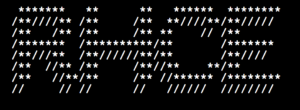
Let’s go ahead with the hints and tips about the exam,
- You should know when to move on, so don’t put extra time into one task.
- You will have four managed nodes and the controller node in your exam. So create your practice lab with the same quantity of nodes. All nodes should be set up and prepared from the controller node during the exam, including ssh key-based authentication.
- Typing URLs is very time-consuming during the exam, and peoples make lots of typos, So I highly recommend copy-past from your exam question page to the terminal using HOTKEYS.
Copy: ctrl+c
Paste: ctrl+shift+v
- During the exam, open 3 terminal windows if possible: One for solving tasks, one for testing, and one for “ansible-doc.
- The core of this exam is preparing your ansible configuration file (ansible.cfg) and inventory file, so practice creating static inventory files on the fly.
- Another core component is knowing where to look for the information, for instance, If you don’t know how to use a module, don’t forget that you can use the ansible-doc command. So become the master of ansible-doc, keep a dedicated terminal for ansible-doc during the exam.
ansible-doc <Module-Name>
ansible-doc -l | grep setup*
- Work on using Ad-hoc commands and including them in scripts if requested in the exam.
- Practice using some modules such as yum_repository, rpm_key, service, timezone, firewall, cron, shell, ansible-vault, ansible-galaxy and file.
- Install virtualization software like “VirtualBox or Vmware.
- Workstation” and make your test lab practice. You can use rdbreak.
- Do not memorize. Learn by practice.
Exam Duration is 4 hours which is still not enough, so time is your main enemy. So attempt time-consuming questions first. - You must pass the RHCSA to become a certified RHCE.
- Do not worry about installing Linux while taking the Because these tasks are not in the exam.
- Read the instructions carefully.
- You can use the washroom during the exam, but the invigilator will rescan the room.
